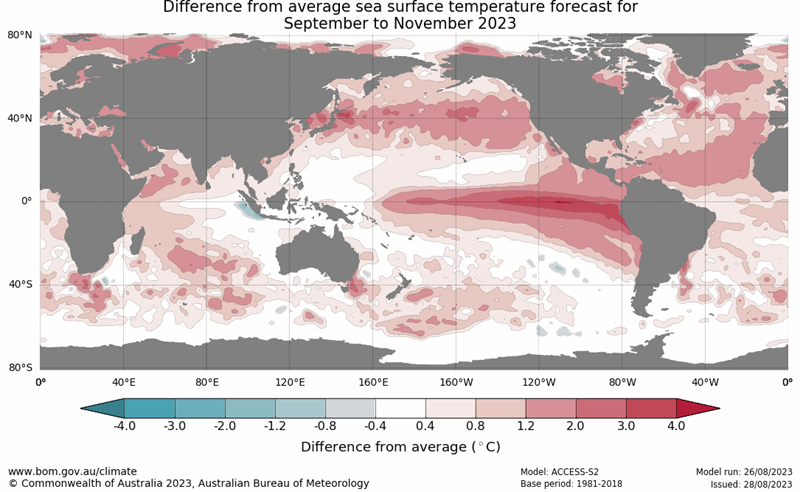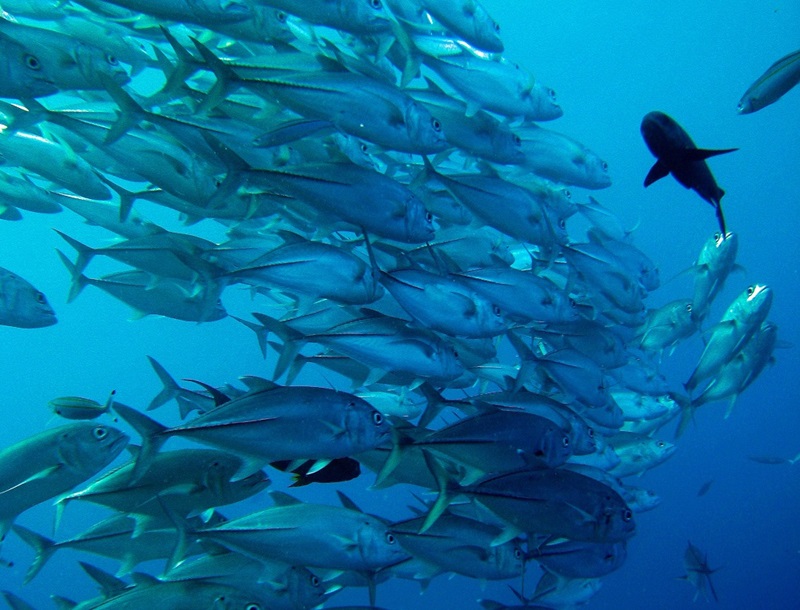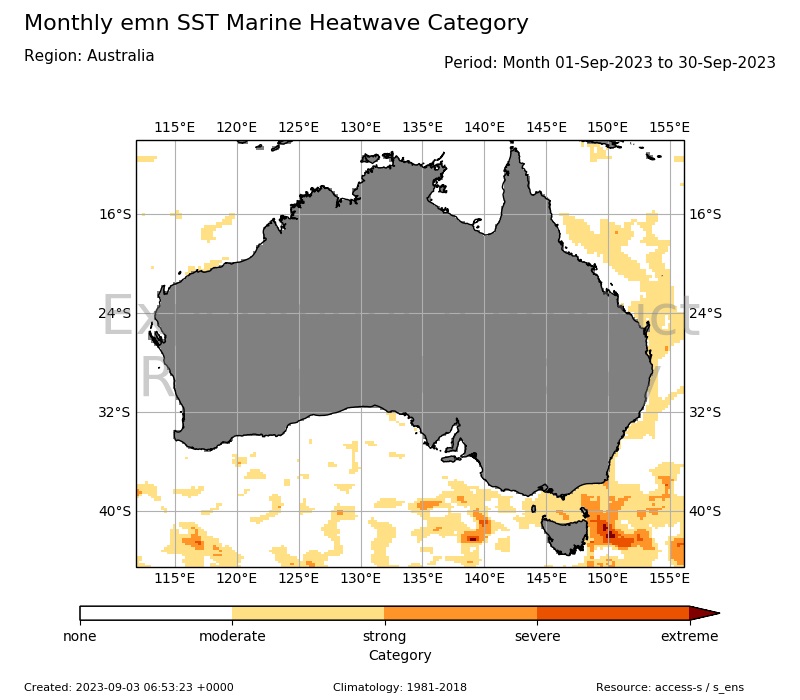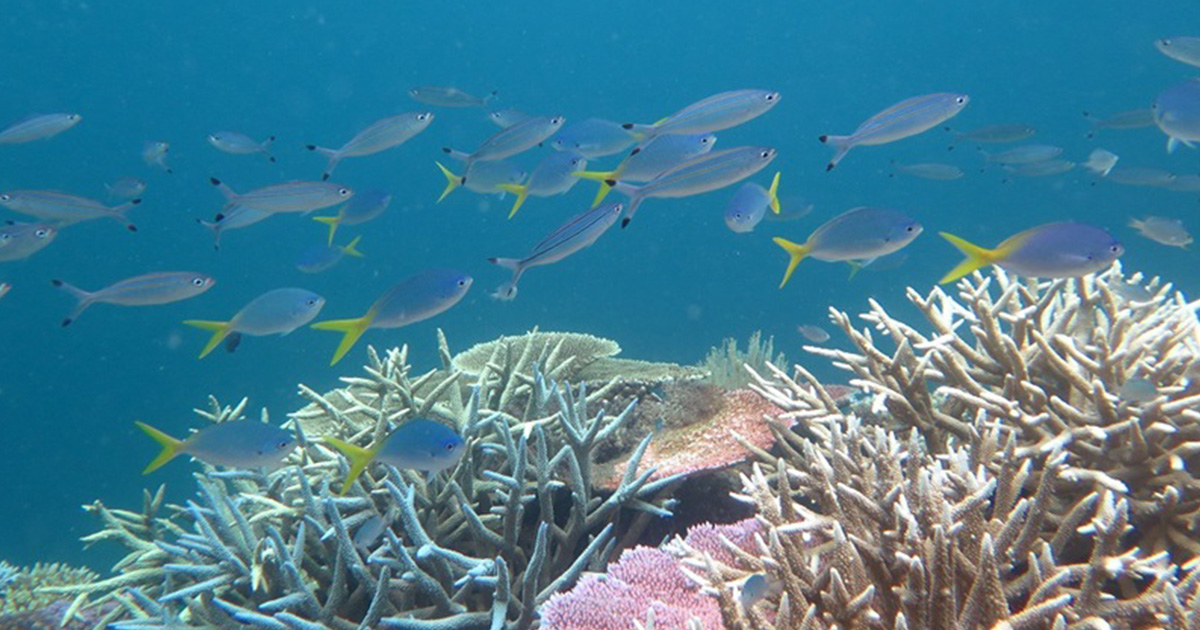Marine heatwaves (MHWs) are prolonged oceanic warm water events that can have devastating impacts on marine ecosystems. These ecosystems include coral reefs and kelp forests, as well as ocean-dependent industries like fishing and tourism. Large climate drivers such as El Niño are known to impact the frequency, intensity, and duration of MHWs.
The Bureau of Meteorology (Bureau) has declared an El Niño event is now underway. Forecasting suggests above-average ocean temperatures are likely to occur around Australia this summer. We're working with the Bureau to predict and prepare for the potential impacts of MHWs in Australia.
CSIRO Research Director for Sustainable Marine Futures Dr. Alistair Hobday said the marine heatwave forecasting we are now able to do is truly cutting edge. Alistair is the lead author on a new paper about preparing for marine heatwave risks from El Niño, which has recently been published in Nature.
"Since the last El Niño in 2015–16, we’ve learned a lot and we’re now in the unique position of being able to provide forecasting on two-or three-month timescales," Alistair said.
"This advance warning gives stakeholders a lot more time to prepare and hopefully mitigate some of the risks of MHWs."
 The Bureau of Meteorology's global seasonal forecast for September-November is indicating above average sea temperatures in Australian waters, particularly off Tasmania, in the next three months. (Image credit: bom.gov.au.)
The Bureau of Meteorology's global seasonal forecast for September-November is indicating above average sea temperatures in Australian waters, particularly off Tasmania, in the next three months. (Image credit: bom.gov.au.)
What are the potential impacts of marine heatwaves?
Marine heatwaves can be caused by a range of factors, including ocean currents and the warming of the ocean surface from the atmosphere. Like terrestrial heatwaves they are categorized depending on their strength. Unfortunately, these one-off extreme heat events compound the damage that is already being caused by the long-term warming of the ocean.
MHWs are more common in El Niño years, and on previous occasions this has led to detrimental impacts on major fisheries, changes to the habitat of certain marine species, and severe coral bleaching.
A coral bleaching event has been underway in the Eastern Pacific and Caribbean. It is expected that if above-average ocean temperatures eventuate in Australia this summer, bleaching may also occur on the Great Barrier Reef (GBR). By mid-June 2023, some sections of the GBR were already experiencing temperatures that were one degree C above average for the time of year.
The Bureau's Seasonal and Marine Applications Team Leader Dr. Claire Spillman said marine heatwaves can occur all year round.
"Marine heatwaves are defined as conditions in the top 10 per cent of the historical record for that location and time of year," Claire said.
"El Niño events tend to peak in December and decay in the summer months, and can result in sustained, higher than usual ocean temperatures in certain regions around Australia, which can lead to marine heatwaves occurring.
"Some of the impacts might include mass coral bleaching, altered aquaculture yields, and changes in wild fish migration patterns."
 School of Giant Trevally fish on the Great Barrier Reef. Communicating improved marine heatwave forecasts to fisheries and aquaculture industries through briefings, allows for proactive management decisions. (Image credit: C. Jones, Commonwealth of Australia (GBRMPA))
School of Giant Trevally fish on the Great Barrier Reef. Communicating improved marine heatwave forecasts to fisheries and aquaculture industries through briefings, allows for proactive management decisions. (Image credit: C. Jones, Commonwealth of Australia (GBRMPA))
How has marine heatwave forecasting improved?
Since 2020, we've been collaborating with the Bureau on a world-leading project to improve both the accuracy and the lead-time for MHW forecasting.
This seasonal forecasting work, which uses the Bureau’s ACCESS–S2 to combine sophisticated climate modelling with the latest observations, means it is now possible to predict increased sea temperatures not just a few days in advance, but up to three months ahead.
"Physics-based atmosphere-ocean forecast models have increased in resolution and accuracy, as has our understanding of how these events develop and persist," Claire said.
"There are ocean observing facilities that target marine heatwaves and other extreme events, which can further this understanding and provide rich datasets for verification of forecasts. Machine learning techniques also have great potential to produce useful marine heatwave forecasts directly or to assist with calibration and downscaling of seasonal prediction model output."
Communicating these improved forecasts to stakeholders, including through industry-specific briefings, allows for proactive management decisions and interventions to alleviate impacts or prepare for post-event recovery.
"The forecasting we can now do means that we take away some of your ability to be surprised," Alistair said.
"Having access to that information so far in advance means there’s a whole spectrum of things that can be done—starting when the risk is likely but not certain, and moving all the way through to when the risk is emerging."
 Researchers use seasonal forecasts of ocean temperature to produce prototype marine heatwave outlooks. The slide shows an experimental marine heatwave forecast for September 2023, which was presented to the fisheries sector. (Image credit: CSIRO)
Researchers use seasonal forecasts of ocean temperature to produce prototype marine heatwave outlooks. The slide shows an experimental marine heatwave forecast for September 2023, which was presented to the fisheries sector. (Image credit: CSIRO)
How can Australia prepare for marine heatwaves?
Over the past decade, research has yielded practical tools and guidance that can help address some of the challenges presented by MHWs. Alistair’s Nature paper details an extensive range of actions that can be taken to reduce vulnerabilities—by researchers, government, ecosystem managers, and industry.
Stakeholders who work in fisheries and aquaculture, for example, might explore whether it’s possible to change location, yields, delivery times or targeted species. Tourism businesses might consider their seasonal staffing levels and equipment availability.
Governments have an important role to play in providing a supportive regulatory environment that allows for agility in those industries, and in identifying vulnerable ecological areas and communities.
For researchers, advance knowledge of a marine heatwave might provide the opportunity to gather crucial baseline knowledge and upscale their environmental monitoring efforts. These short-term measures are all complementary to ongoing efforts to include climate change impacts in long term-policy and planning.
"If we’re coming up to a period of time where we are forecasting there are going to be impacts on the Great Barrier Reef, for example, that gives you the opportunity to ask yourself what you might do about it," Alistair said.
"As a politician, as a researcher, or as an industry manager—if the information is there but you choose not to take steps to prepare, then really you’re neglecting to look after your future.
"Australia’s efforts around identifying bushfire risks—preparing for those events and planning for the recovery stage—have improved greatly in recent years.
"Now we need to see the same level of co-ordination around extreme events in the ocean. With more information available, we have the opportunity to provide much better support for our marine industries and the blue economy."



